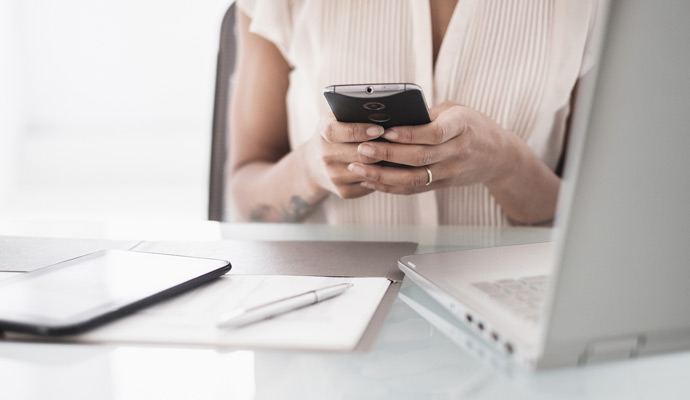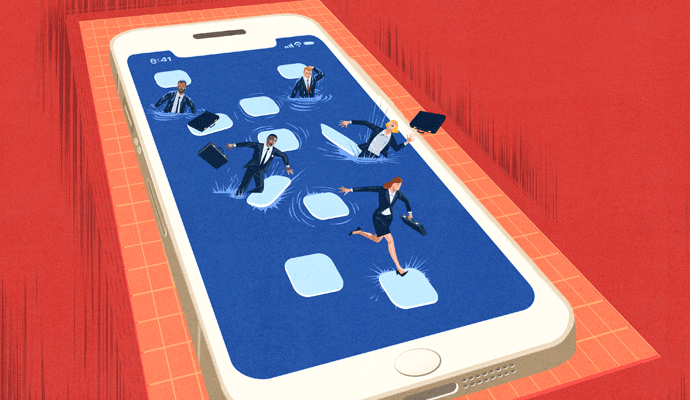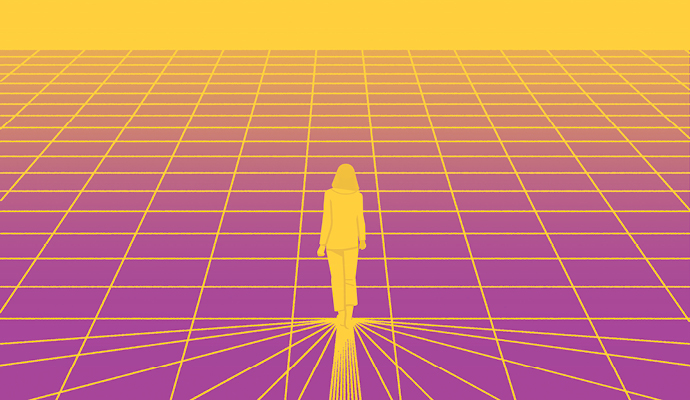Overcoming digital distraction
Six steps to help you limit connectivity and improve your focus and productivity.
Did you make any New Year’s resolutions? If you did, they probably included lose weight, get in shape, and have more sex. I would add something else for 2019: Get a grip on your digital distraction. Limiting your connectivity will give you back time, energy, and control.
In less than three decades, computer technology has moved from being in the room (the desktop), to being anywhere we like (the laptop), and now as computers have shrunk to fit in a pocket, to being always in our hands (the smartphone). This has ushered in a culture of nonstop use that is compulsive and, quite simply, distracting.
Our connectedness is now so total that a recent British study says that we pick up our devices every 12 minutes: That is roughly 80 times during one day’s waking hours. We know how addictive algorithms are designed to be: We are familiar with the term clickbait because we regularly fall prey to it. Two recent studies show that people enjoy social situations less when they keep their smartphones with them. An article inPsychology Today described “the powerful psychoactive impact of the Internet” that results from positive neurological pathways that are created when we compulsively check our phones. A famous Stanford University study published in 2009 concluded that multitasking is a myth and that in practice those who juggle online and offline tasks are what one of the authors called “suckers for irrelevancy.… Everything distracts them.”
We also know that circuitry of the human brain cannot cope with too much distraction or focus-switching: Torkel Klingberg, professor of cognitive neuroscience at the Karolinska Institutet in Sweden, posited in his 2008 book, The Overflowing Brain, that “attention is the portal through which the information flood reaches the brain” but that our brains lack “boundless capacity” to both pay attention and process attention.
Get a grip on your digital distraction. Limiting your connectivity will give you back time, energy, and control.
This “always on” behavior isn’t improving our performance. Recent research from Pew Research Center found that 15 percent of adults believe it is impairing their focus at work — which is nearly double the share of teens (8 percent) who say they often lose focus in school due to their phones. One result is that sales of so-called dumb phones, which can be used for calls and texts but cannot connect to the Internet, are rising.
The Six-Step Program
I present this research not to make some neo-Luddite argument about switching off our technology — that genie is clearly not going back in the bottle — but both to understand the extent of our digital distraction and to devise more effective strategies to combat the problem. I conclude from both the neuroscience and the cultural unease around our embedded reliance on technology that the only answer is to resolve to behave differently. Here are the steps I recommend.
1. Get distance. The closer you keep your smartphone, the more tempting it is to use it. So get smarter about your smartphone and get a dumb phone too, which you use only to call and text your favorite contacts. A dumb phone allows you to be reachable at all times and begins to wean you off being “always on.” Managers should not ask employees to be available 24/7. The science behind stimulus control reveals that a repeated response to a stimulus, such as checking your phone, only reinforces the behavior.
2. Go deep. Switching among email, the Internet, and social media shreds attention and robs you of time and focus. Computer scientist Cal Newport coined the phrase deep work to describe “professional activities performed in a state of distraction-free concentration” — and cautions against “the pinprick onslaught of small obligations that seem harmless in isolation but aggregate to serious injury to a deep work habit.” Learn to recognize the difference between what Newport calls “shallow” work (heavy on digital distraction) and a deeper mode of attention.
3. Limit choices. Barack Obama famously stuck to simple and limited clothing options to prevent “decision fatigue,” a principle that can be applied to information overload too. I recently found I had spent more than two hours weighing up different airlines. I was in a vortex of choice. We need to accept that when we try to make perfect choices we are often just equivocating. Consciously limit yourself to only the information you need to review.
4. Go analog. Remember pen and paper? It turns out that your mind may remember what you write by hand far better than what you type. When you write something down, you encode it in your memory. The point is to let go of the assumption that using your smartphone or laptop all of the time is inherently better and saves more time than using the best digits available: your hands.
5. Value face-to-face. Remember “dress-down Friday”? Well, what about starting “face-to-face Friday,” a day when all meetings are in-person, so all digital interactions are finished by Thursday evening? The more fanciful this thought seems, the more likely it is that you need it. And instead of simply hitting “reply,” try something radical: Pick up the phone and invite a colleague for coffee. Why? Because being face-to-face builds trust.
6. Re-route. If you want to minimize your digital distraction, you have to change your habits. Think of this in the context of re-routing: Instead of juggling technologies, decide to go off-piste, not with a one-off digital detox session but with a daily routine in which you build in time to focus without dipping into and out of different apps. A smartphone can do at least 10 digital activities at once. You can’t. Around seven is considered our cognitive limit (pdf).
Be the Lightbulb
Finally, a joke: How many psychoanalysts does it take to change a lightbulb? One, but the lightbulb has to really want to change. There is ample evidence that willpower is like a muscle and needs to be strengthened. Motivation is key to making real changes in your relationship to tech.
My advice: Make 2019 the year that you are the lightbulb. As Cal Newport says: “Leave the distracted masses to join the focused few.”





